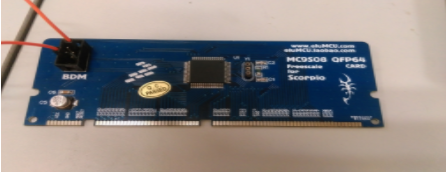Nowadays, for most layout designs, board-level simulation is no longer an option, but an inevitable way. The EDA industry is the main driving force for the rapid growth of the global electronics industry. Its market size is US$1 trillion. Most of the sales are monopolized by several large PCB companies (measured by EDA market standards), and the tools sold are concentrated on edge simulation and Integrated circuit chip (ASIC, SOC, etc.) design.
However, most electronic layout design engineers design printed circuit boards, not integrated circuits. The sales of EDA tool software for PCB layout design only account for a small part of the total sales of EDA. The reason for this difference is that although IC engineers regard simulation as a basic step in the design process, many circuit board design engineers do not accept simulation tools. This article analyzes the reasons for this difference, and introduces the reasons for the rapid development of EDA tools and the areas that engineers should pay attention to.
Reasons to escape PCB design simulation

There are three main reasons why simulation is not used in board layout design: complex use, lack of simulation models, and high cost. First of all, so far, the use of PCB simulation software is still quite complicated, so the concept of "simulation is too complicated" has been formed among circuit board design engineers. Second, there are not many circuit simulation models, so it is almost impossible to simulate a complete circuit. For example, if there are 200 components on the PCB, of which 193 can be simulated, and the remaining seven key components cannot be simulated, then imitate: what does this mean? More importantly, simulation software is usually expensive.
Printed circuit board design reviews In the past, PCB performance was evaluated using a series of instruments to evaluate circuit board prototypes (usually close to the final product). With the increase in circuit complexity, multi-layer boards and high-density circuit boards have emerged, and people have begun to use automated wiring tools to handle the interconnection of increasingly complex components. Since then, the working speed of the circuit has been continuously improved, the functions have been continuously refurbished, and the physical size of the connections between the components and the electrical characteristics of the circuit board have attracted more and more attention.
The development of semiconductor technology has a great influence on PCB design. As digital devices become more and more complex, the number of gate circuits reaches tens of thousands or even millions. In the past, a single chip can now run on the entire board, allowing more functions to be assembled on the same PCB. Programmable chips have become indispensable devices in many circuit board designs. By the end of the 1990s, PCB was not only a platform supporting electronic components, but also a high-performance system structure that was smaller, faster, better performance, and lower cost.
The development of board-level simulation fundamentally, the market is a powerful engine for board-level simulation. In the highly competitive electronics industry, it is important to quickly bring products to the market. This is the traditional PCB design method to design schematics, then place components and traces, and finally use a series of prototypes that have been repeatedly verified/tested. Changing the design means an unacceptable time delay under the pressure of entering the product market quickly.
So far, the tools chosen by circuit board design engineers are limited to circuit diagram design, PCB routing and automatic routing tools. When the simulation model is completed and the design engineer is willing to use the simulation tool, the engineer sometimes uses the simulation software to design, but usually only in a limited part of the circuit.
The design goal of "first product release" is not just an advertising phrase. In fact, it is a life-and-death competitive demand. Early detection, prevention and correction of design errors in product design to prevent circuit board errors is more important than ever. PCB simulation is one of the best methods.